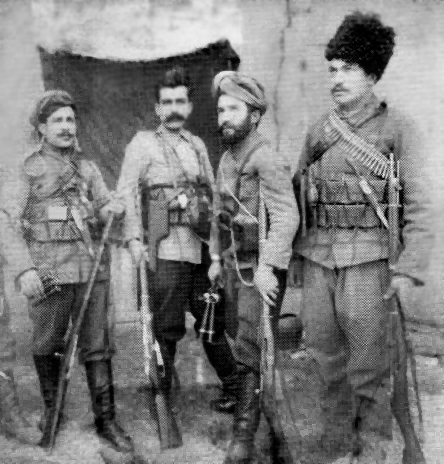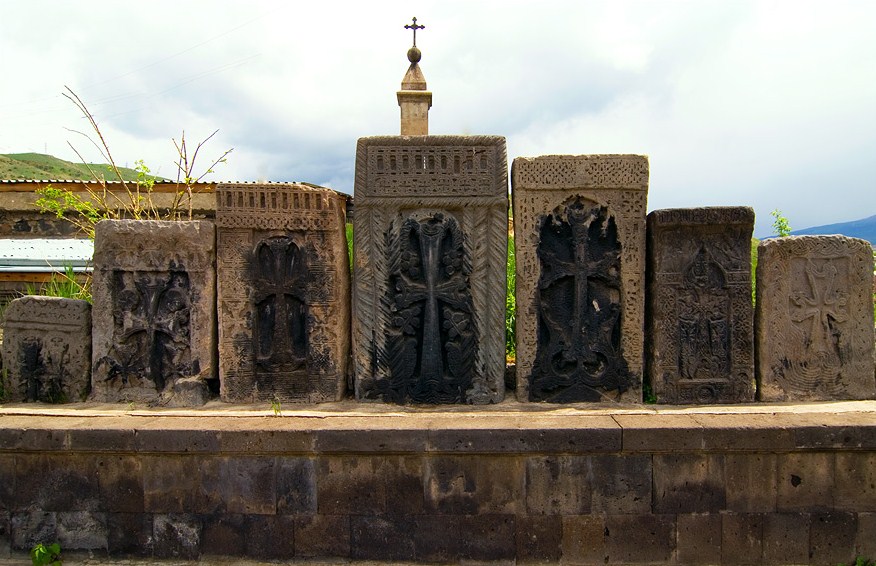|
Aram Manukyan
Aram Manukyan (; born March 9, 1957) is an Armenian politician. Early life Born in Vanadzor, Manukian graduated from the Hovhannes Tumanyan State Pedagogical University with a degree in physics. Between 1978 and 1983 he worked as a teacher at a secondary school in Yeghegnut, Lori, Yeghegnut. Between 1983 and 1993 he was an engineer at the ''Avtomatika'' Scientific-Production Association of Vanadzor. Political career Manukyan was elected to the National Assembly (Armenia), Supreme Council in 1990 Armenian parliamentary election, May 1990 parliamentary election from the Pan-Armenian National Movement and served as the deputy chairman of the Committee on Science, Language and Culture. To symbolize the revival of the Armenian statehood, the initial declaration of the independence of Armenia from the Soviet Union on 23 August 1990 was read by him because he bore the same name as Aram Manukian (1879-1919), the founder of the First Republic of Armenia. He was reelected in 1995 and remai ... [...More Info...] [...Related Items...] OR: [Wikipedia] [Google] [Baidu] |
Aram Manukian
Aram Manukian (19 March 187929 January 1919) was an Armenian revolutionary, statesman, and a leading member of the Armenian Revolutionary Federation (Dashnaktsutyun) party. He is widely regarded as the founder of the First Republic of Armenia. Born and educated in Russian (Eastern) Armenia, he was mostly active in Van, one of the largest cities in Turkish (Western) Armenia. He rose to prominence there as a community organizer. During the first months of World War I, he worked with local Ottoman officials to de-escalate rising tensions until mid-April 1915, when Turkish forces laid siege to the city. He led the successful Armenian civilian self-defense of Van. As a result, tens of thousands avoided being deported and massacred by the Turkish government while the Armenian genocide was underway. He briefly served as the head of the provisional government in Van. Following the Russian Revolution and the collapse of the Caucasian front in 1917–18, Aram was "popular dictator" ... [...More Info...] [...Related Items...] OR: [Wikipedia] [Google] [Baidu] |
Vanadzor
Vanadzor (, ) is an urban municipal community and the third largest city in Armenia, serving as the capital of Lori Province in the northern part of the country. It is located about north of the capital Yerevan. As of the 2011 census, the city had a population of 86,199, down from 148,876 reported at the 1979 official census. Currently, the town has a population of approximately 75,186 as of the 2022 census. Vanadzor is the seat of the Diocese of Gougark of the Armenian Apostolic Church. Etymology In the official records of the Russian Empire, the city was labelled as (). Following the Sovietization of Armenia, the city was renamed (, alternatively ') in 1926 after Armenian Bolshevik revolutionary Alexander Miasnikian. In 1935, it was renamed ''Kirovakan'', after the Russian Bolshevik leader Sergey Kirov. A close associate of Miasnikian and Aghasi Khanjian, Kirov had been assassinated on December 1 of the previous year. On 25 June 1992, after Armenia gained its independe ... [...More Info...] [...Related Items...] OR: [Wikipedia] [Google] [Baidu] |
Yeghegnut, Lori
Yeghegnut (, also Romanized as Yekheknut, Yekhegnut, Yegegnut, and Eghegnut; formerly, Kamyshkut) is a town in the Lori Province of Armenia Armenia, officially the Republic of Armenia, is a landlocked country in the Armenian Highlands of West Asia. It is a part of the Caucasus region and is bordered by Turkey to the west, Georgia (country), Georgia to the north and Azerbaijan to .... References *World Gazeteer: Armenia– World-Gazetteer.com * Populated places in Lori Province {{Lori-geo-stub ... [...More Info...] [...Related Items...] OR: [Wikipedia] [Google] [Baidu] |
National Assembly (Armenia)
The National Assembly of Armenia (, ''Hayastani Hanrapetyut'yan Azgayin zhoghov'' or simply Ազգային ժողով, ԱԺ, ''Azgayin Zhoghov'', ''AZh''), also informally referred to as the Parliament of Armenia (խորհրդարան, ''khorhrdaran'') is the legislative branch of the government of Armenia. Overview The National Assembly was originally established in 1918 as the Khorhurd () by the Armenian National Council following their declaration of independence. Acting as the nation's provisional legislative body, the Armenian National Council tripled its membership, forming an interim coalition government composed of Dashnaks and Populists. Following the Armenian parliamentary elections of 1919, the National Assembly's membership increased again up to 80 deputies including several minority representatives. The Khorhurd continued to function with an overwhelming Dashnak majority through four Prime Ministers in the span of two years, until the Sovietisation of Armen ... [...More Info...] [...Related Items...] OR: [Wikipedia] [Google] [Baidu] |
1990 Armenian Parliamentary Election
Parliamentary elections were held in Armenia on 20 May 1990,Dieter Nohlen, Florian Grotz & Christof Hartmann (2001) ''Elections in Asia: A data handbook, Volume I'', p329 although further rounds were held on 3 June and 15 July due to low turnouts invalidating earlier results. By 21 July, 64 seats were still unfilled, with 16 still unfilled in February the following year. The result was a victory for the Communist Party of Armenia, which won 136 of the 259 seats.Nohlen et al., p335 The remaining candidates were all officially independents, but almost all were members of the Pan-Armenian National Movement. Overall voter turnout was 60%. Results References {{Armenian elections Supreme Soviet Armenia 1990s in Armenian politics Election and referendum articles with incomplete results Armenia Armenia, officially the Republic of Armenia, is a landlocked country in the Armenian Highlands of West Asia. It is a part of the Caucasus region and is bordered by Turkey to the wes ... [...More Info...] [...Related Items...] OR: [Wikipedia] [Google] [Baidu] |
Pan-Armenian National Movement
The Pan-Armenian National Movement or Armenian All-national Movement (; HHS) was a political party in Armenia. History The party emerged from the resolution of the Nagorno-Karabakh Autonomous Council of 20 February 1988, to unite with Soviet Armenia. Its first meetings, which demanded reunification of Nagorno-Karabakh with Armenia, were held in Yerevan on 21 February 1988. Its ruling committee led by Igor Muradyan was organized in the same month, and Levon Ter-Petrossian was incorporated into the ruling body in May 1988. On 15 June 1988, with representation of the movement in the Supreme Council, this body adopted a resolution on reunification of the two national units. PANM participated in the 1990 Armenian Supreme Soviet elections, gaining 59 seats in Parliament. The party nominated Ter-Petrossian as their candidate in the 1991 Armenian presidential election. Ter-Petrossian won the election, securing 83% of the vote. The party once again nominated Ter-Petrossian as their ca ... [...More Info...] [...Related Items...] OR: [Wikipedia] [Google] [Baidu] |
First Republic Of Armenia
The First Republic of Armenia, officially known at the time of its existence as the Republic of Armenia, was an independent History of Armenia, Armenian state that existed from May (28th ''de jure'', 30th ''de facto'') 1918 to 2 December 1920 in the Armenian-populated territories of the former Russian Empire known as Eastern Armenia, Eastern or Russian Armenia. The republic was established in May 1918, with its capital in the city of Yerevan, after the dissolution of the short-lived Transcaucasian Democratic Federative Republic, Transcaucasian Federation. It was the first Armenian state since the Middle Ages. In its first year of independence, Armenia was confined to a small territory around Lake Sevan after its invasion by the Ottoman Empire during the Caucasus campaign. Following the Armistice of Mudros, Armenia expanded its borders in the wake of the Ottoman withdrawal, leading to a Armeno-Georgian War, brief border war with neighbouring Democratic Republic of Georgia, Georgia ... [...More Info...] [...Related Items...] OR: [Wikipedia] [Google] [Baidu] |

